Frog Fruit: My Favorite Native Ground Cover
Frog Fruit (also spelled Frogfruit) was foreign to me until just this year. I was immediately captivated by its fun name. But it wasn’t until I saw it in real life, abuzz with bees, that I fell in love! I now have this pretty ground cover with mini white flowers in my backyard landscaping and it seems right at home.
Want to attract more pollinators to your yard? Be sure to download my FREE Pollinator Nectar Plants PDF. Take this handy one-pager to the nursery to get the native plants that pollinators LOVE!
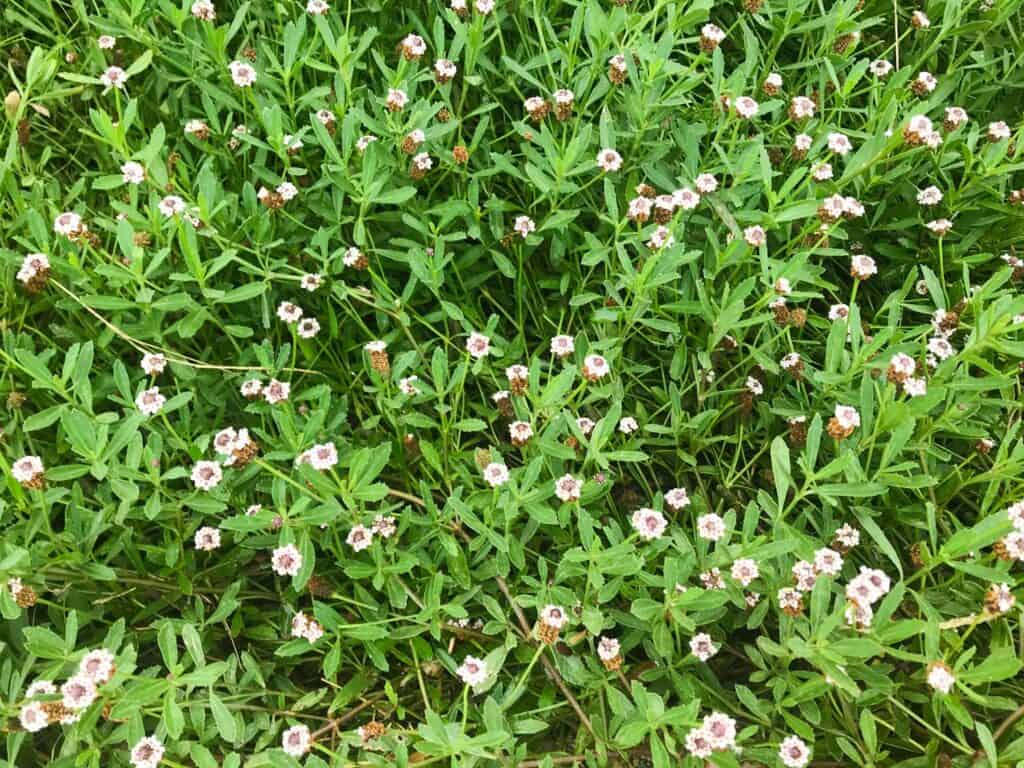
What are the benefits of frog fruit?
I hope this post convinces you to become a frog fruit lover as well. If you need some more convincing, here are five reasons why frog fruit is the perfect native ground cover addition to your home landscape or gardening beds.
1. It grows quickly
Some of my Master Naturalist friends may say it grows too quickly! It can be aggressive in flower beds, but if you are looking for a ground cover that grows quickly, this is the one for you. You can always trim it back. It is easy to remove because it doesn’t put out long roots. A ground cover like this does a great job in crowding out weeds so you have to weed less!
Many people even use frog fruit as a lawn alternative. It grows well in part sun to full sun conditions. Imagine replacing even a portion of your lawn with this pretty flowering plant. Rather than being an ecological dead zone like most non-native turf, it will bring your yard alive with pollinators!
My goal in 2021 is to remove part of the lawn in our backyard and replace with with more native plants. You can bet frog fruit will be a big part of that. I’ve already started incorporating it in two places in my backyard landscaping design and it is doing really well.
2. It is very low maintenance
While frog fruit blooms best in full sun, it can handle some shade too. My plants receive part sun as they are located in a bed beneath two large live oak trees. They seem as happy as can be. I’ve seen the ground cover growing naturally in the Texas Hill Country mixed in with grass. It can handle some walking on without being damaged. It can also handle very dry, hot conditions. That is quite a feat!
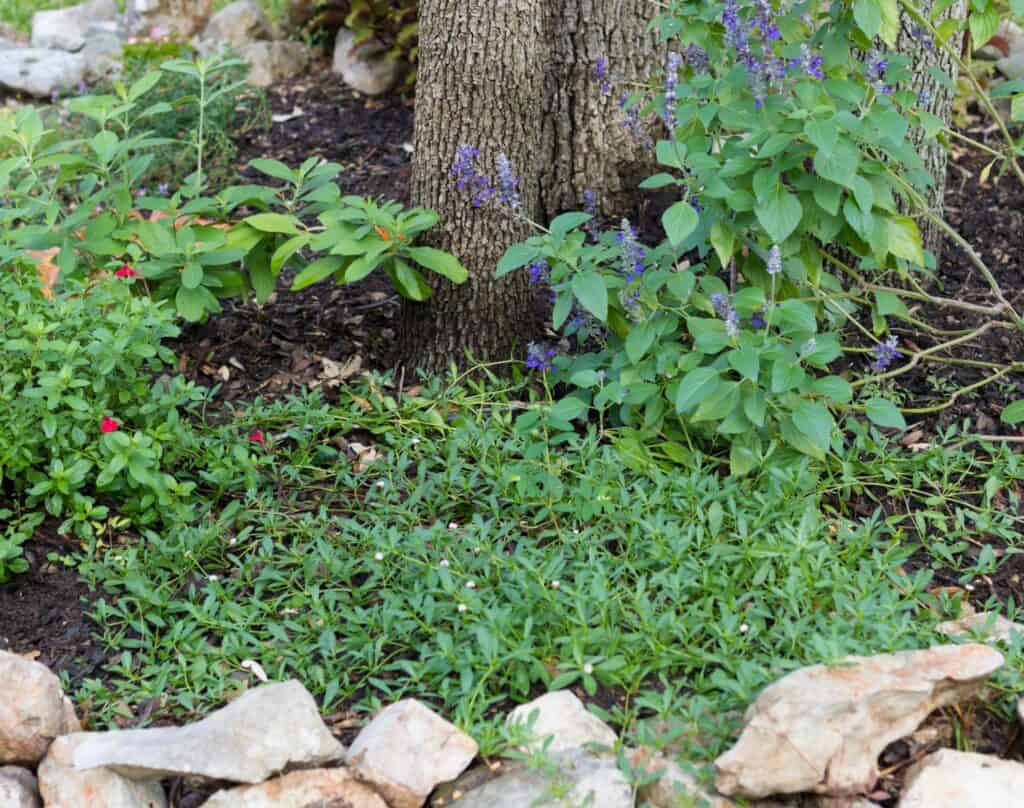
3. It has a long bloom period
The white blooms appear in April and last all the way until October. I love that it is a ground cover that flowers. It is just as visually interesting as my other flowering perennials. In addition to a ground cover, it can be used as a trailing flower for pots. That is something I plan to try next spring!
4. It is loved by pollinators
I have never seen my frog fruit in bloom without at least one pollinator around it. From bees, to wasps, to butterflies, it is alive with action. It is a fun plant for children and adults to observe alike. It would be a great addition to add to a pollinator garden.
5. It is a host plant for several butterfly species
When looking for new plants for your yard, I encourage you to prioritize host plants. Those plants that are used by butterflies and moths to lay their eggs and feed their caterpillars. This plant checks the box as a host plant for three different butterfly species:
I am excited to keep an eye out for each of these butterflies next spring so I can record them in iNaturalist!
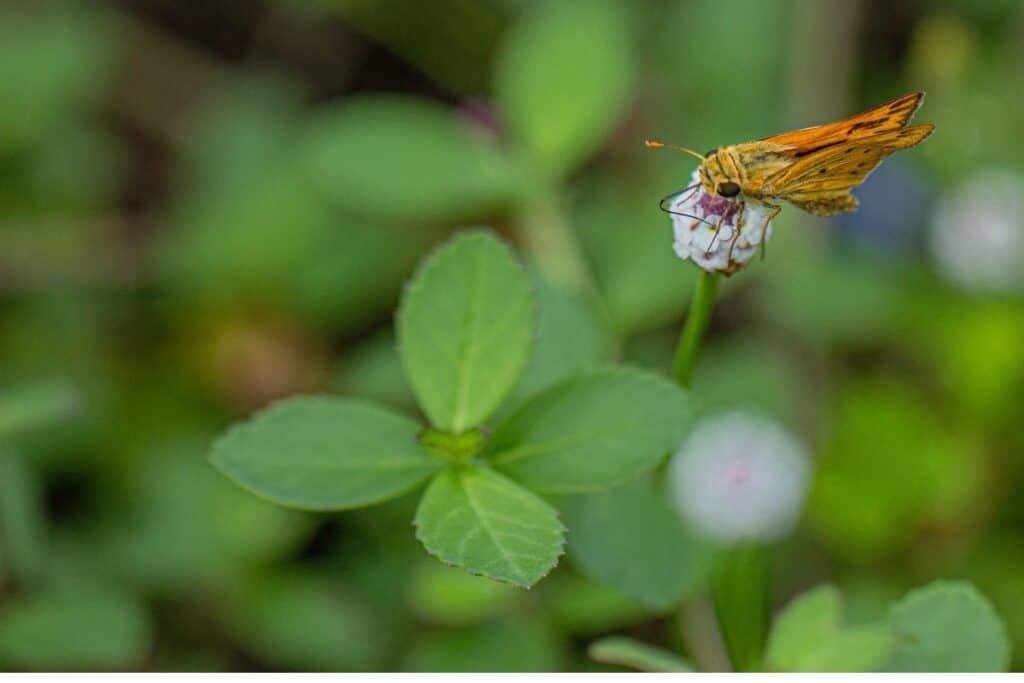
Download the Free PDF: Native Nectar Plants
Want all the pollinators in your yard? I created a handy one-page PDF for you to print and take along with you to the plant nursery. It includes a thumbnail photo of each plant along with both its common and scientific name, shade requirements, and other helpful growing info. Get it here:
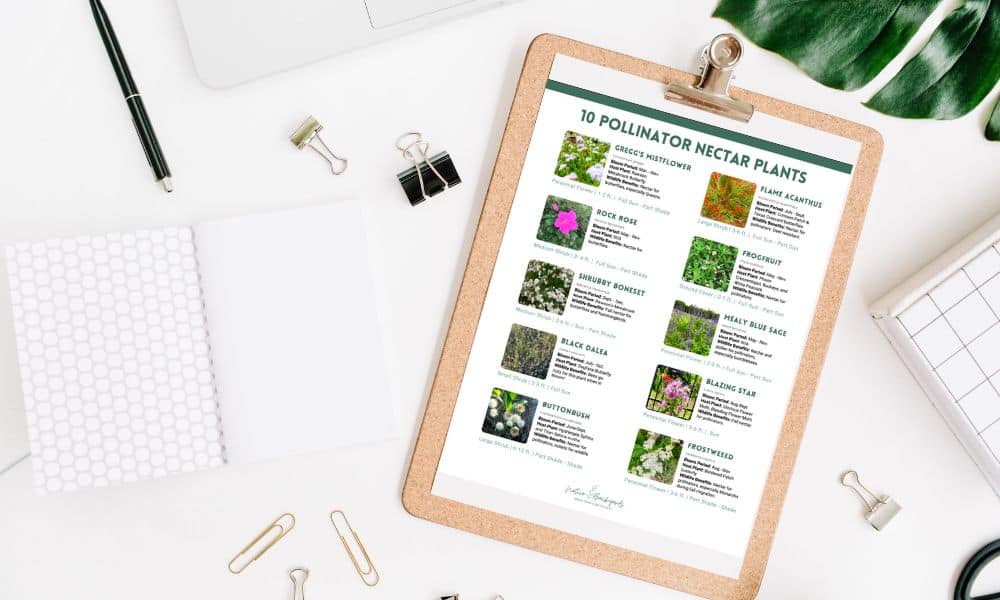
Why is it called frog fruit?
The scientific name of the Texas Frog Fruit I’m referring to is phyla nodiflora. Plants have only one scientific name, but can have many common names. Frog fruit is no different. It is also known as Matchhead and Turkey Tangle Fog Fruit. Another equally silly name!
Apparently, the plant initially was called “fog fruit”. In the Middle Ages, farmers would call low growing plants that took over their freshly hayed field “fog fruit”. This general name for low growing plants was given to phyla nodiflora. However, over time the name transitioned from “fog” to “frog”. So the name has nothing to do with frogs, just a mispronunciation of its initial common name!
Where is frog fruit native to?
Well, first of all, there are are actually four different species of frog fruit. All of them look pretty similar, and all are native to United States. That makes it a good candidate for growing in many parts of the US, not just South Central Texas where I live. Frogfruit is part of the Verbena family of plants.
Here are the states where phyla nodiflora is native. If you don’t see your state on the list, check out the other three types of frog fruit. Regardless, it is worth finding to grow in your garden!
- Alabama
- Arkansas
- Arizona
- California
- Florida
- Georgia
- Hawaii
- Kansas
- Kentucky
- Louisiana
- Maryland
- Missouri
- Mississippi
- North Carolina
- New Mexico
- Nevada
- Oklahoma
- Oregon
- Pennsylvania
- South Carolina
- Texas
- Utah
- Virginia
Frog fruit flower
The frog fruit flower is a dainty white flower that packs a big punch when it comes to attracting pollinators! The white flower is actually several tiny flowers in one, all perched on a brown cone. The flowers are at the end of a skinny stem that sticks out from the ground cover.
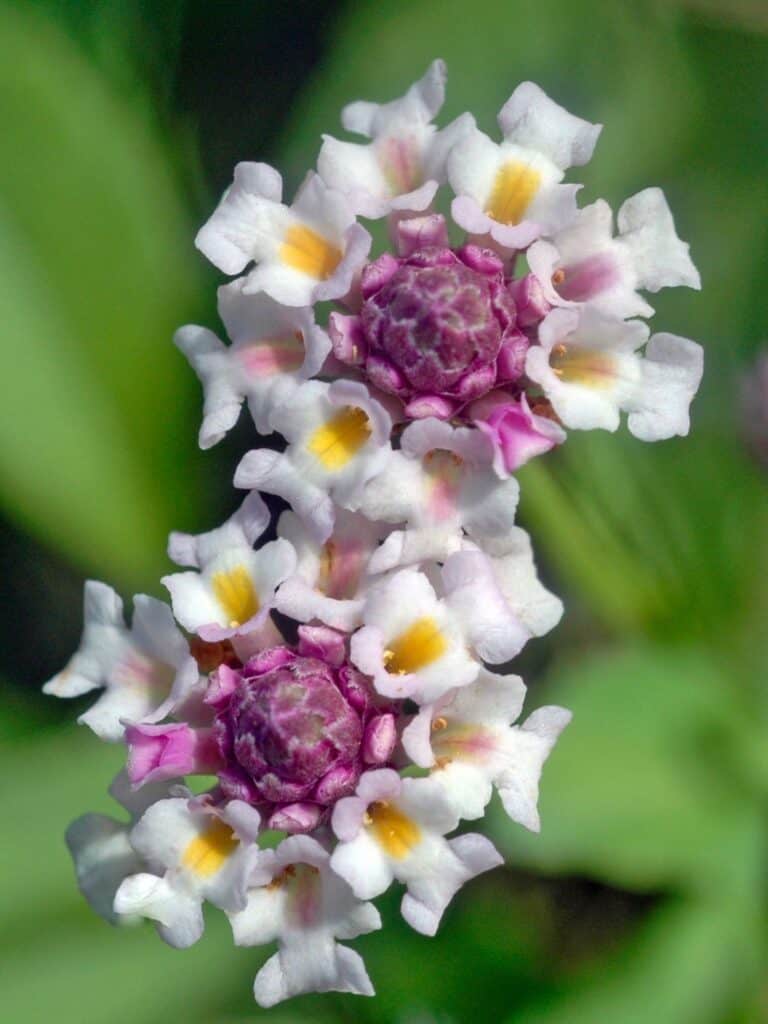
How to grow frog fruit
There is not much involved in growing frog fruit. You’ll want to water it regularly until it is established, but after that it is very easy going. I hand water mine around once a week during the summer. It can be trimmed back in the winter it it gets too dense or tangled. Frogfruit goes dormant in the winter but can be semi-evergreen in warmer climates.
How to transplant frog fruit
To transplant or propagate frog fruit, you can just take one of its runners with roots. Clip it from the main plant and carefully replant in a new area. I have taken some of the runners from my landscaping and transplanted them to grow between stepping stones leading to my wildflower garden!
Pin this image to spread the word about frogfruit!
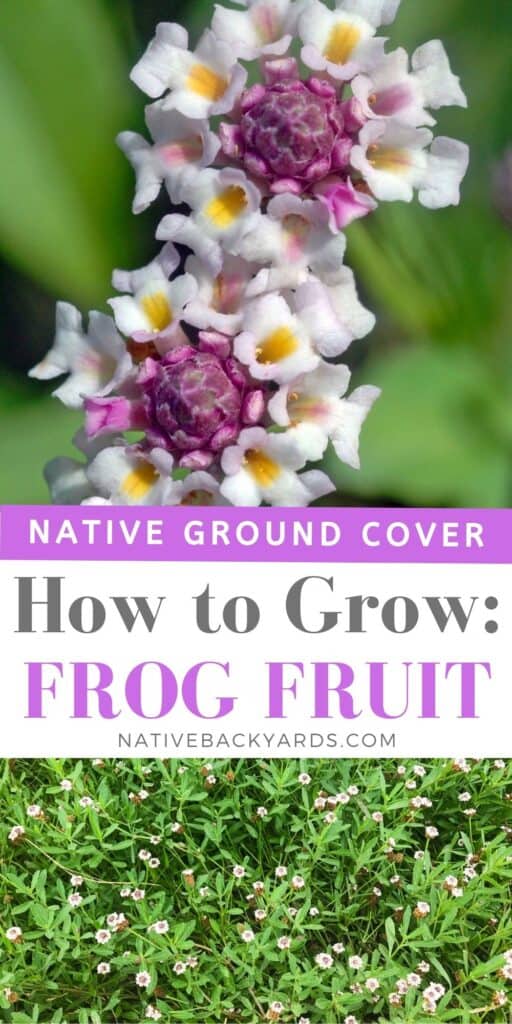
Frog Fruit: Plant Care Printable
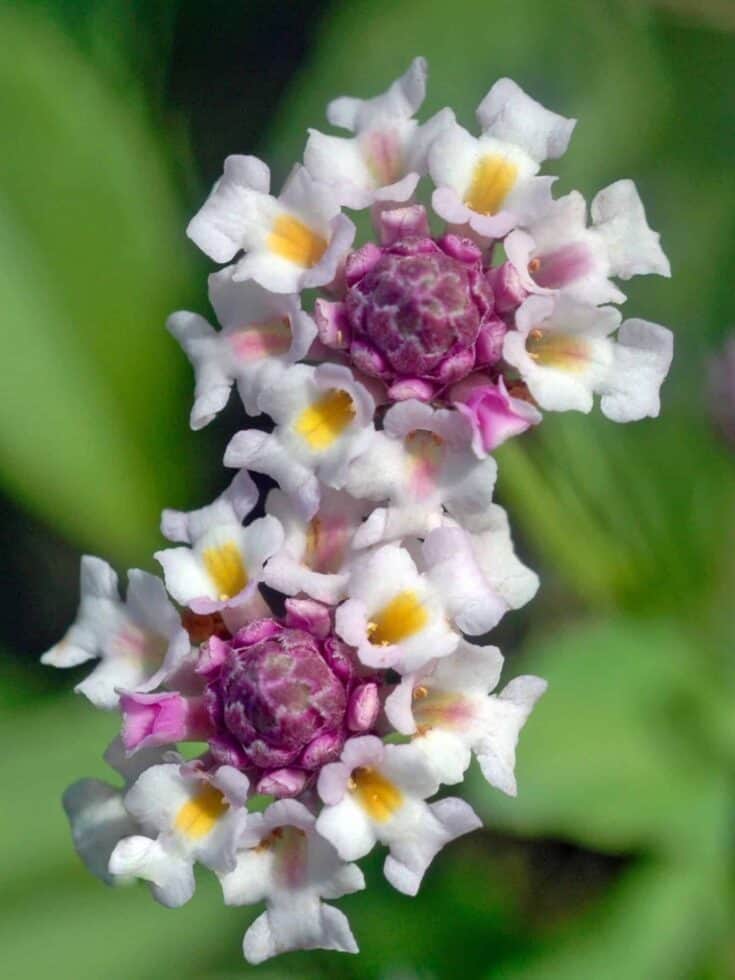
phyla nodiflora
Native to:Alabama, Arkansas, Arizona, California, Florida, Georgia, Hawaii, Kansas, Kentucky, Louisiana, Maryland, Missouri, Mississippi, North Carolina, New Mexico, Nevada, Oklahoma, Oregon, Pennsylvania, South Carolina, Texas, Utah, Virginia
Mature Height and Width:6-12" tall / spreads 1-4" wide
Sun Conditions:Part shade to full sun. Tolerates a variety of conditions but blooms best in full sun.
Water Needs:Low water once established. Can withstand drought conditions.
Wildlife Benefits:Great nectar source for pollinators. Blooms last from April through October. Host plant for the Phaon Crescent, White Peacock and Common Buckeye butterflies.
Materials
Instructions
Watering
- Low water needs once established.
- Can tolerate drought conditions and hot temps.
Pruning
- Prune back plant in winter if it gets too leggy.
- It typically goes dormant in freezing temps, but can be evergreen in warmer climates.
Propagating
- Plant can be propagated by clipping a runner with roots and replanting carefully.
Notes
Frog fruit is a great alternative to grass turf, and can tolerate some walking on it. It can be mowed once after it flowers! This fast growing ground cover is a great addition to any native garden or pollinator garden.
Recommended Products
As an Amazon Associate and member of other affiliate programs, I earn from qualifying purchases.
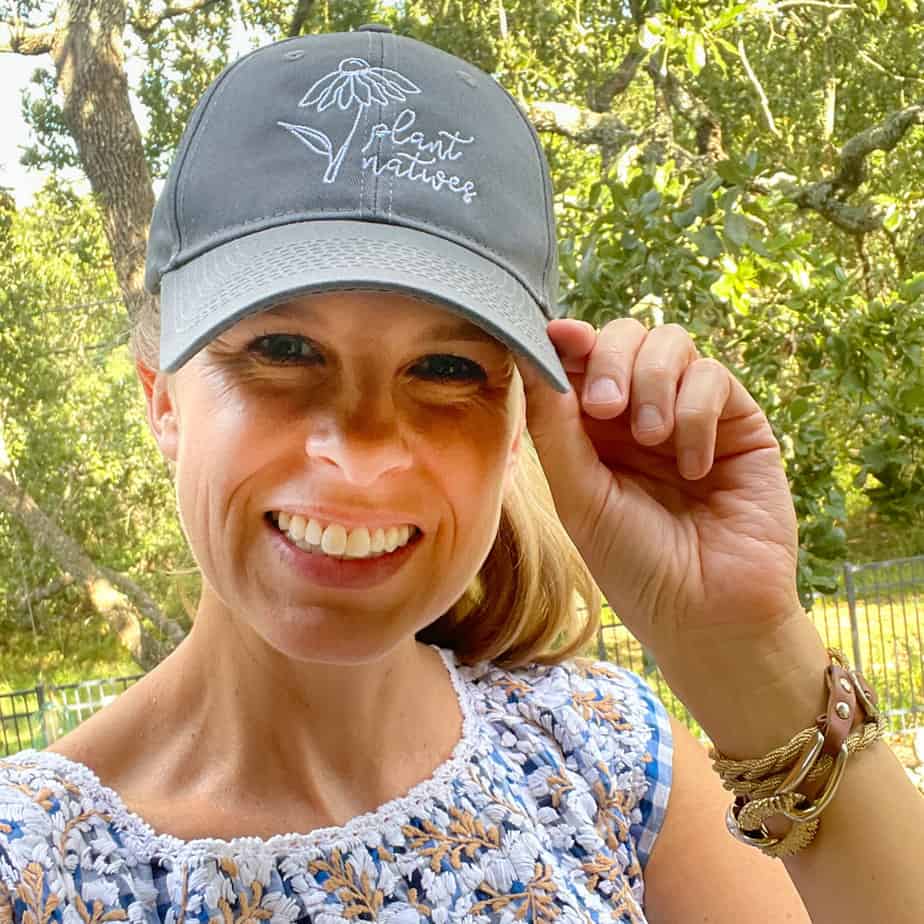
Welcome to Native Backyards! I’m Haeley from San Antonio, Texas, and I want to help you grow more native plants.
I have seen firsthand how the right plants can bring your yard to life with butterflies, bees, and birds. I’ve transformed my yard with Texas natives and I’m excited to share what I’ve learned with you.
Join my newsletter here! – each week I’ll send you helpful tips to make your native plant garden a reality!
Want to learn more about me and my garden? Check out my About page!

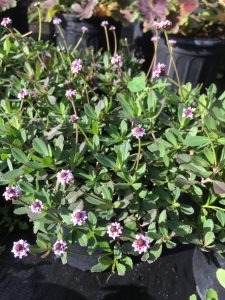
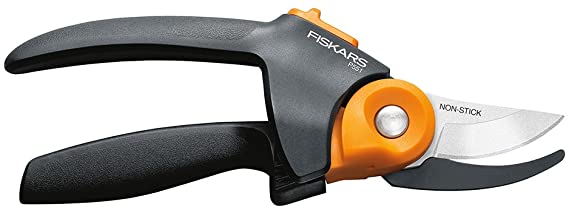
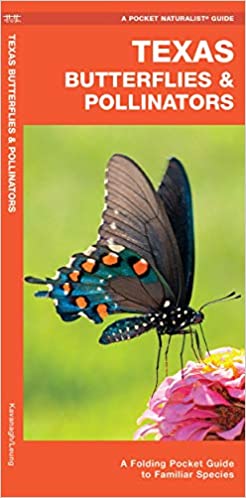
Can I propagate now ( September) in Florida? Or should I wait until Spring? I am attempting to replace part of my lawn. Thank you.
I think propagating Frogfruit now should work! You should have enough growing season left in Florida for it to get established. I would dig up a section with a good amount of roots, transplant it, and keep it well watered until it is established. Let me know how it goes!
Where can I buy seeds.?
That is a great question. I can’t find a good source online. I’ve only seen it in transplants. Hopefully you can find a nursery near you that carries it, or have a friend that wouldn’t mind digging some up for you! It grows pretty readily here in Texas in the wild.
I first discovered Frog Fruit growing along the roadside in the blistering sun and hard rocky soil. I saw its cute, little flowers and decided it would make a great groundcover in the full sun. After all, this stuff was thriving in nothing but heat with no water and cars driving over it! Being a lover of native plants, I checked it out that it was “okay” and not some formidable invasive. Not only okay, but totally beneficial! This has got to be one of the native superstars, yet it is relatively unknown up here in north central Texas. Love it! And recommend it often! Not found in nurseries here, but you can just pull it up along any country road and stick it in the ground!
I couldn’t agree more, Kathryn! I had never heard of it until a year or so ago, and now I notice it growing everywhere! It is absolutely one of my favorite native plants for the amount of pollinators it attracts. It also is certainly hardy and I’ve also seen it growing in full Texas sun with no supplemental water.
Researching this and I live in Tyler TX. I cannot find in nurseries and have even been told, “if we don’t carry it, it isn’t beneficial to our area” So, just checking since you mentioned “North Central Texas and get your input and if you think it might work in the Piney Woods?
Bob Wells Nursery in Mineola is stocking it. https://bobwellsnursery.com/
This is a new plant to me an organic gardener since 1976 and I’m going to start looking come spring. This plant is everything a garden could ask for. I grow a lot of herbs and native plants for pollinators and am cutting down the size of the vegetable garden so this is just what I need to fill in those empty spaces. SW OK
Hi Judy, so glad I was able to introduce you to a new plant! I hope you find some near you. If not, contact me in the spring and I can try to send you some of mine! Best, Haeley
Can you plant over a septic field?
Thanks
Hi Shane. Good question regarding the septic field. Based on this article, I think Frogfuit would work well as it is a shallow rooted plant. It says “shallow-rooted herbaceous plants that are well adapted to normal rainfall amounts for the area are best suited for use in a drain field planting.” Here is more info: https://hgic.clemson.edu/factsheet/landscaping-over-septic-drain-fields/
So much interesting information! Do you know why farmers in the middle ages called it “fog fruit?”
Hi Brandon – from what I read is that farmers called the plants “fog fruit” because their meadows were often covered with fog in the morning. 😊 Over time the name morphed from “fog fruit” to “frog fruit”!
I’ve only today heard of this plant!
I’m looking to replace my lawn with a native and this may fit the bill if it will thrive in zone 7.
I’m in the most southern part of new jersey. what are it’s chances?
hope I can find some.
thank you!
I am considering “frog fruit” for part of my front yard which is part sun/shade. The soil tends toward alkaline. Also our neighborhood is overrun with rabbits. Do rabbits eat it like candy or just take a taste and then? Also I appreciate help considering the soil conditions for “frog fruit”. Thanks for your help. Very interesting article!
Hi Martha, thanks for your question. Frogfruit tolerates a variety of soils including alkaline soils, so that should not be a problem. I am not sure about the rabbits however. I can’t find any evidence online of rabbits liking to eat it. I would give it a try!
Would it be wise to wait until spring to plant some frog fruit? I’m in Hays County and we want to plant native and adaptive plants around an old home. The soil is not too good – very rocky and alkaline. Or with today’s rainfall would it get a good start before winter freezes?
I think you are completely fine planting Frogfruit in the ground now. Keep it well watered if we don’t get rain. If there is a hard freeze you could try to cover it, but it should do great.
HI Haeley, is frogfruit safe around my dogs? I want to eventually replace my back yard with a native texas plant. Frogfruit sounds perfect – low maintenance, drought tolerant, and pretty. Would the dogs want to eat it? would it be poisonous if eaten, walked on, layed on, rolled around in, etc? thank you
Hi Maryann! Frogfruit does not appear to be toxic to dogs. See this post: https://www.wildflower.org/expert/show.php?id=10341. It can take foot traffic so it should be able to handle some dog traffic. Another native option could be Buffalo Grass: https://tpwd.texas.gov/huntwild/wild/wildlife_diversity/wildscapes/buffalograss.phtml
Will Frogfruit do well in Western Washington zone 8b?
Hi Kate! Frogfruit thrives here in Texas in Zone 8b, and it is hardy to Zone 7a, so it should do well in your growing zone. However, it is not native to Washington state, nor are the other Frogfruit (Phlya) species. Here are the native range maps as an FYI: http://bonap.net/Napa/TaxonMaps/Genus/County/Phyla.
I maybe getting rid of my grass and replacing it with frog fruit however, can it take a wet environment? Also, can it tolerate traffic? It’s a beautiful ground cover and since we’ve been flooded so much I’m over replacing grass.
Hi Karen, Frogfruit tends to like dry, well-drained soil. If it receives too much water it can get quite leggy and tall (around 1 ft). It can take some foot traffic and occasional mowing.
what, if any, are the downsides of planting lippia/ phyla nodiflora among other ornamental landscape plants, Sacramento area, area 8-9, as part of neighborhood street hillside planting.
Hi Pat, I think it would be a great candidate for a hillside planting. If it is well-watered it can grow more aggressively and get up to a foot tall. However, it if it starts to encroach on your other plantings it is easy to pull up so you can minimize its spread where you don’t want it.
I found that Frog Fruit grows thick and abundant when the drought is so bad the weeds won’t grow. But, any bare or damaged spot that gets just a little bit of rain will have tall competing weeds, that you then have to trample the Frog Fruit to go after. In other areas of untamed Bermuda (hillside), it seems to fight for clumps of dominance, and then the remaining Bermuda keeps out the evil weeds. But overall, I’ve found it difficult to keep large areas “pure”. I would love to figure out what to mix it with as both a compliment and weed control. I recommend trying it and give it some room, but just don’t expect it to behave as a perfect ground cover.
Will this grow in zone 4? If not, is there another, similar ground cover? Thanks.
Hi Joan, unfortunately Frog Fruit is only hard to zone 7a. It likes warmer climates. If you let me know where you are located (zip code) I can send you some native ground cover options for your area.
Lots of questions and comments about alkaline soils, but no mention of acidic ones. Is Frog Fruit comfortable (and viable!) in those?
It looks like it can handle mildly acidic soil. In general, Frogfruit is not very picky about soil type.
Is frog fruit deer resistant?
Yes, Frogfruit is typically deer resistant.
I was just introduced to this plant at a home I purchased in Mobile, AL. It is extremely fast grower and will cover the plantings in a perennial garden. It’s going to take a little maintenance to keep separated. From what I see as a benefit is when to is mowed every so often and used in an area all alone.
You’re right, it can be a fast grower in the right conditions, especially if it is getting supplemental water. I will often pull some up when it spreads too close to perennials or areas I don’t want it. Luckily it pulls up very easily!
I pulled up some frog fruit that was starting to cover a new honeysuckle bush we just planted. I put it in a bucket of water with the intention of transplanting it later that day. Well, life got in the way and I forgot about it for almost two weeks. When I finally checked it, it had developed great roots. We gave it to a friend and she had success planting it in her garden. It’s a tough little ground cover.
Talk about a happy accident! 😊 Yes, Frogfruit can be rooted in water. Great tip!
Hello. I’d like to try a portion of my yard under some pecan trees where the grass died with fig fruit. I’ve seen your responses about tolerating some traffic but I’m wondering how it does in the winter. I’m in Arlington, Tx so zone 8a I think. During winter, during dormancy will there be dead foliage to prevent a dirt/mud yard? Thanks!
Hi Megan, If the area under the Pecan Trees is quite shady, I wouldn’t recommend Frog Fruit. It really needs sun to thrive. Straggler Daisy may be a better option. Neither of them look great in the winter. There will be mostly dirt in that area when they are dormant.
Hi. Your articles are very interesting and useful. I am in zone 8 in SC and considering replacing part of my lawn with frogfruit. Would the frogfruit be okay with a riding lawnmower traveling over it about 4 times per year on its route to mow another part of the lawn?
Thanks Heather! Yes, the Frogfruit should be totally fine. It can handle some foot traffic and can even handle occasional mowing.
Thanks!
Hi! One more question. I am in South Carolina in zone 8a. It is Oct 29th now, and we will get our first frost in 3 days. Should I plant frogfruit this week, or should I wait until spring?
I do have a question, I am looking to replace a mulched area and was wondering if this plant will grow over mulch. I’m trying to be a bit lazy and not have to remove the much that is there now and am wondering if this will just grow over it. Thoughts?
Yes, it will grow over mulch!